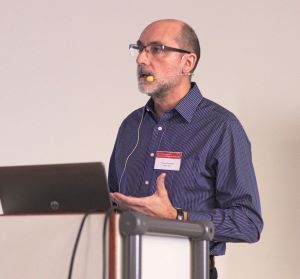Hot Off the Press!
New interactors and a cellular model resulted from a grant awarded by NA Advocacy
by Despina Dinca and Ricardo Escalante
 |
The project titled “Advancing on the molecular function of VPS13A and cellular models for preclinical studies” was conducted by Dr. Ricardo Escalante, Principal investigator, Dr. Oliver Vincent and Alba Tornero (PhD student) at the Biomedical Research Institute in Madrid. The project started in May 2020 and it was successfully completed last month, in May 2023. The total award from NA Advocacy amounted to EUR 38,500. student) at the Biomedical Research Institute in Madrid. The project started in May 2020 and it was successfully completed last month, in May 2023. The total award from NA Advocacy amounted to EUR 38,500.
The project had two objectives. The first one studied the molecular function of VPS13A in order to identify new interactors. The team identified a new endosomal adaptor, SNX5, for recruitment of VPS13A to endosomal subdomains. An endosomal adaptor has the key function to regulate the traffic of proteins to their correct destination inside the cell. This work has been published this month: The association of lipid transfer protein VPS13A with endosomes is mediated by sorting (June 2023).
The second objective of the project was to establish a cellular model for preclinical studies. Having such a model helps researchers to screen for potential new drugs and it also allows to capture data on any possible harmful side effects. The use of knockout pools of HeLa cells (the oldest and most commonly used human cell line in scientific research) seems to be an adequate model to study the effects of the VPS13A alterations and the possible use of different compounds. The researchers used a mixture of wild type (WT) cells and edited (KO) cells and they observed that rapamycin, a potent activator of autophagy, partially suppressed the difference in lysosome accumulation between VPS13A KO and WT cells, suggesting that modulation of the autophagic and lysosomal pathway could be a therapeutic target in the treatment of chorea-acanthocytosis (ChAc). Rapamycin was originally developed as an immunosuppressant for organ transplant patients. This is the first time that rapamycin has been used in a preclinical study in the context of ChAc, and the results of the research warrant further investigation in more complex models on the potential use of rapamycin and the pathways affected by this treatment. These findings were also published last month: Effect of rapamycin on lysosomal accumulation in a CRISPR/Cas9-based cellular model of VPS13A deficiency (May 2023).
 |
|